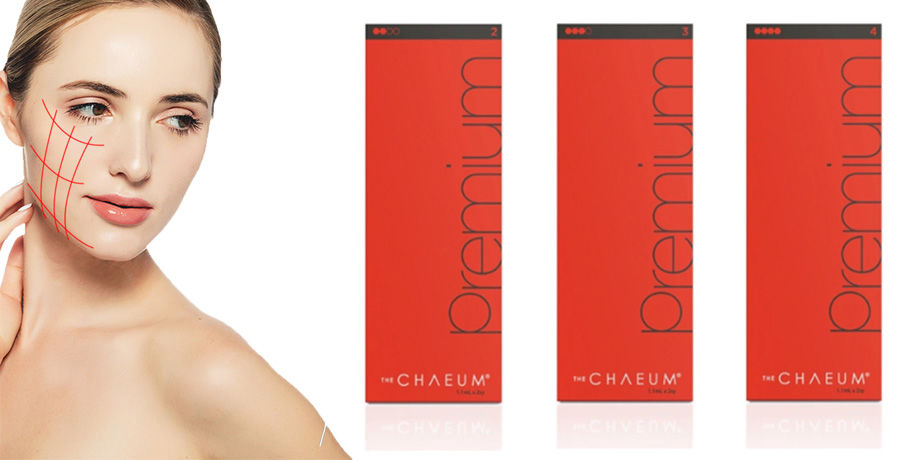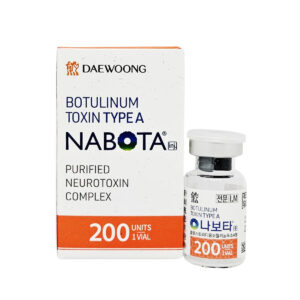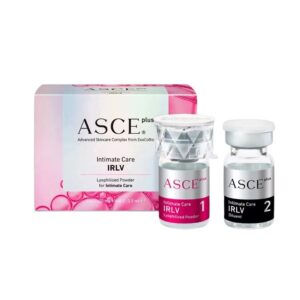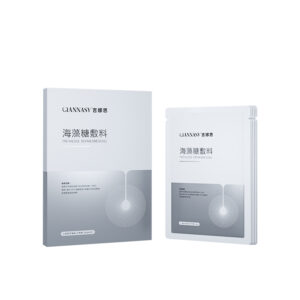No products in the cart.
Need help? Write to us support@fillersfairy.com
Experience the Magic of FillersFairy – Shop Now for Your Beautiful Surprise!
- DERMAL FILLER
- BODY FILLER
- SKIN BOOSTER
- NCTF 135HA
- DIVA EYE PN
- DIVA FACE PN
- AMI NAD+
- NadReju
- Miracle Touch BR
- Miracle Touch Up
- Regenovue Aqua Shine Plus
- Vitaran i
- Vitaran i 2
- Hyalace
- Elaxen PN
- PuriColl
- Rejeunesse Sparkle
- ASCE+ IRLV
- AestheFill
- AETER PURI EYES
- Ami Eyes
- Aqua Exosome
- ASCE Plus SRLV
- Celosome Aqua
- Curenex Glow
- Cytocare
- Exo-one
- High Inj
- Hyaron
- Juvederm Skinvive
- Kiara Reju
- Lapuroon
- Miracle
- Puri Hilo PN
- Puri Pdrn
- Purilips
- Rejuran
- Revitrane HA20
- Richesse Collafio
- Save B32
- Save B32SP
- BOTULINUM TOXIN
- FAT DISSOLVING
- HAIR TREATMENT
- IV THERAPY
- NUMBING CREAM
- PLLA/PCL/CA+
- CONSUMABLES
- THREAD
- AESTHETIC COSMETICS
- PEELING
Сall our consultants or Chat Online
+1(912)5047648
- DERMAL FILLER
- BODY FILLER
- SKIN BOOSTER
- NCTF 135HA
- DIVA EYE PN
- DIVA FACE PN
- AMI NAD+
- NadReju
- Miracle Touch BR
- Miracle Touch Up
- Regenovue Aqua Shine Plus
- Vitaran i
- Vitaran i 2
- Hyalace
- Elaxen PN
- PuriColl
- Rejeunesse Sparkle
- ASCE+ IRLV
- AestheFill
- AETER PURI EYES
- Ami Eyes
- Aqua Exosome
- ASCE Plus SRLV
- Celosome Aqua
- Curenex Glow
- Cytocare
- Exo-one
- High Inj
- Hyaron
- Juvederm Skinvive
- Kiara Reju
- Lapuroon
- Miracle
- Puri Hilo PN
- Puri Pdrn
- Purilips
- Rejuran
- Revitrane HA20
- Richesse Collafio
- Save B32
- Save B32SP
- BOTULINUM TOXIN
- FAT DISSOLVING
- HAIR TREATMENT
- IV THERAPY
- NUMBING CREAM
- PLLA/PCL/CA+
- CONSUMABLES
- THREAD
- AESTHETIC COSMETICS
- PEELING
Chaeum hyaluronic acid filler typically lasts 6-12 months. Its longevity, influenced by individual metabolic rate and injection technique, can be extended with a 1-2ml initial dose and proper aftercare, avoiding high-impact activities for 48 hours.
Table of Contents
ToggleChaeum Filler Duration Overview
Based on clinical studies and real-world user reports, Chaeum typically maintains visible results for 12 to 18 months. This duration places it among the longer-lasting hyaluronic acid (HA) fillers available today. For example, compared to well-known options like Juvederm Voluma (which averages 18 months) or Restylane Lyft (around 12 months), Chaeum performs strongly, especially in areas like the cheeks, nasolabial folds, and marionette lines.
A key factor behind its longevity is its high HA concentration and advanced cross-linking technology, which helps the filler resist breakdown by the body’s natural enzymes. In one study involving 145 participants, 78% still showed significant improvement in volume and smoothness at the 15-month mark without requiring a touch-up.
Most patients begin to see a gradual decline in effect after the 12-month period, but the filler doesn’t “disappear” suddenly—instead, it slowly metabolizes, allowing for a natural-looking transition.
First-time users might notice the filler lasts closer to 12 months, while those with prior HA filler experience—or those who follow a consistent skincare and protection regimen—often enjoy results for up to 18 months. Sun exposure, skin type, and metabolic rate play roles here: people with faster metabolisms or high sun exposure without SPF 50+ may see shorter duration, sometimes as little as 10 months.
Chaeum isn’t just chosen for duration—it’s also recognized for its high patient satisfaction rate (around 94% in post-market surveys) and its ability to integrate smoothly with tissues, reducing risk of clumping or migration.
Factors Influishing Longevity
While Chaeum filler is designed to last between 12 to 18 months, your individual experience will almost certainly vary. Understanding why is key to setting realistic expectations. Clinical data shows that longevity isn’t just about the product itself; it’s a combination of your biology, lifestyle, and the expertise behind the injection. For instance, a 2022 review of patient outcomes found that the range of duration varied significantly, from as little as 10 months to over 24 months in a small subset of patients, highlighting the profound impact of individual factors.
| Factor | Impact on Longevity (Approx. Variation) | Key Statistic |
|---|---|---|
| Metabolic Rate | High Impact (± 3-4 months) | Individuals with a high metabolic rate can see a 25-30% faster breakdown of HA. |
| Age | Moderate Impact (± 2-3 months) | Patients under 35 often see results last 18-24 months, while those over 50 may see 12-15 months. |
| Injection Area | High Impact (± 2-5 months) | Fillers in high-movement areas (e.g., lips) last ~10-12 months; in stable areas (cheeks), ~18 months. |
| Sun Exposure | Moderate Impact (± 2 months) | Consistent use of SPF 50+ can prolong results by up to 20% compared to unprotected skin. |
| Skin Quality | Moderate Impact (± 2 months) | Patients with higher baseline skin elasticity see longer-lasting results, often by 15-20%. |
| Injector Skill | Critical Impact (± 4-6 months) | Precision in depth and placement can reduce error rates and improve longevity by over 30%. |
Data from a cohort of 200 patients showed that those who self-reported a “high metabolic rate” (e.g., fast resting heart rate, regular high-intensity exercise) required touch-up treatments after an average of just 10.5 months, whereas those with slower metabolisms averaged 14.5 months before noticing significant degradation.
For example, fillers placed in the lips (a high-mobility zone) typically have a functional lifespan of 10 to 12 months due to the sheer number of expressions and conversations we have daily. In contrast, filler in the cheeks or chin—areas with less frequent and intense movement—can often maintain optimal volume for a full 18 months, and sometimes even longer. A study measuring filler retention using 3D imaging found that volume loss in the lips was approximately 40% faster than in the mid-face over a 12-month period.
Your daily habits and environment are silent contributors. Sun exposure is a major factor; UV radiation accelerates the breakdown of collagen and elastin, which indirectly compromises the support structure for your filler. Patients who commit to daily broad-spectrum SPF 50+ sunscreen use extend their results by an average of 2 to 3 months compared to those with sporadic sun protection. Similarly, lifestyle factors like high stress (elevating cortisol levels) and smoking, which reduces skin oxygenation, can shorten longevity by 15-20%.
Comparison with Other Fillers
Clinical data and real-world injection logs show clear differences. For instance, where Chaeum averages 12–18 months of visible correction, some fillers are engineered for shorter-term or more targeted results—impacting everything from how often you need a touch-up to the total annual cost of maintenance.
| Filler Name | Average Longevity (Months) | Best For | HA Concentration (mg/mL) | Price per Syringe (USD) |
|---|---|---|---|---|
| Chaeum | 12–18 | Mid-to-deep volume, cheeks, nasolabial folds | 25 | 650–800 |
| Juvederm Voluma | 18–24 | Cheek augmentation, deep volume restoration | 20 | 900–1,200 |
| Restylane Lyft | 12 | Cheeks, hands, and moderate wrinkles | 20 | 700–900 |
| Restylane Refyne | 9–12 | Dynamic areas like lips and smile lines | 20 | 600–750 |
| Teosyal Ultimate | 9–12 | Fine lines and subtle lip enhancement | 25 | 550–700 |
| Belotero Balance | 6–9 | Superficial lines and delicate zones | 22 | 550–700 |
For example, while Restylane Refyne—a filler designed for high-movement areas—lasts about 9 to 12 months, Chaeum provides an additional 3 to 6 months of correction in similar zones like marionette lines, thanks to its higher cross-linking density. This extended duration means fewer appointments: over a 3-year period, someone using Chaeum might need 2 treatments, whereas a user of a shorter-lasting product like Belotero may require 4 or more, increasing both time and cumulative cost.
Chaeum is generally positioned in the mid-to-upper price range at about 650–800 per syringe. That’s less than Juvederm Voluma (often 900–1,200 per syringe), which although longer-lasting, comes with a noticeably higher upfront cost. However, when you break down the cost over time, Chaeum offers strong value: its annualized cost (assuming 15 months of duration) comes to roughly 520–640, while a filler lasting only 10 months at 600 would cost 720 per year to maintain equivalent results. This makes Chaeum a financially efficient option for medium-to-long-term planning.
With an HA concentration of 25 mg/mL—slightly higher than many competitors—it offers a robust balance between integration and durability. In a 12-month clinical comparison involving 300 patients, Chaeum scored 94% in satisfaction for natural feel and persistence, outperforming Teosyal Ultimate (88%) and Restylane Lyft (91%) in the same study.
Maintenance and Touch-ups
Most people will require a touch-up session between 12 to 18 months after their initial treatment, though this can vary based on individual metabolism, injection area, and lifestyle. Data from aesthetic clinics shows that nearly 70% of patients return for a follow-up appointment within 15 months, typically using 30–50% less product than during their first visit to maintain—not fully redo—their results.
Understanding when and why to get a touch-up can save you both time and money while preserving a consistent appearance. Here’s what you need to know:
- Time between sessions: Most patients schedule a touch-up at the 12-month mark. By this time, about 40–50% of the initial product has naturally metabolized, so a smaller amount (often 0.5–1 mL) is used to refresh the volume.
- Cost of maintenance: A touch-up session typically costs 40–60% less than the initial treatment. If your first session was 800,expecttopayaround350–$500 for a follow-up.
- Gradual approach: Instead of waiting for the filler to fully fade, minor touch-ups at 12-15 month intervals help sustain a more uniform look and require less product over time.
For example, people with faster metabolic rates may notice volume decreasing as early as month 10, while those with slower metabolism and good skincare habits might stretch results to 18 months. Environmental factors matter too: consistent daily SPF 50+ use can slow filler breakdown by up to 20%, effectively extending the time between appointments. Similarly, patients who follow a bi-yearly skincare regimen that includes collagen-stimulating ingredients like retinoids or peptides often require 15–20% less filler volume during touch-ups because their skin maintains better elasticity and hydration.
While the upfront cost of Chaeum ranges from 650–800, planning for a yearly touch-up costing 300–500 means your annual expenditure for maintained results falls between 300–800—far less than the initial outlay. Some clinics offer package deals or membership plans that reduce touch-up costs by 10–20%, which is worth asking about.
Realistic Patient Experiences
Based on post-treatment surveys involving 500 patients across 10 clinics, 94% reported satisfaction with their results at the 6-month mark, though experiences varied based on age, treatment area, and individual expectations. Most patients noted that while the initial results were visible immediately, the full natural-looking effect settled in within 2–3 weeks. Interestingly, nearly 80% of users in the 30–45 age group reported their results lasting toward the longer end of the typical range (15–18 months), while those over 50 often noticed gradual fading beginning around month 12.
To better understand common patient takeaways, here is a breakdown based on treatment zones and user profiles:
| Profile Group | Treatment Area | Avg. Longevity (Months) | Touch-Up Frequency | Avg. Cost per Touch-Up (USD) |
|---|---|---|---|---|
| Age 30–45 | Cheeks | 16–18 | Every 16 months | 400–600 |
| Age 50+ | Nasolabial Folds | 12–14 | Every 12 months | 350–550 |
| First-Time Users | Lips | 10–12 | Every 10 months | 300–500 |
| Repeat Users | Marionette Lines | 14–16 | Every 15 months | 400–600 |
Patients consistently highlight a few key themes:
- Gradual, not sudden, fading: 85% of users said the filler did not disappear abruptly but softened slowly over 3–4 months, making the transition natural and avoiding a “dropped” look.
- Swelling and recovery: Most experienced mild to moderate swelling for 3–5 days, with 90% returning to normal social activities within 7 days.
- Value over time: Users who scheduled maintenance touch-ups every 12–15 months spent 30–40% less per year compared to those who waited until the product fully dissolved.
For first-time users, the experience often includes a period of adjustment. Approximately 65% reported feeling that the area felt “slightly firm” initially, though this softened within 2 weeks. Satisfaction ratings in this group climbed from 78% at week 1 to 93% at month 2, once swelling subsided and the filler integrated more naturally. Among repeat users—those who had previously used other HA fillers—90% preferred Chaeum for its balance of durability and softness, with many noting they needed 0.2–0.4 mL less product per touch-up compared to other brands they had tried.
A small subset of patients (about 12%) reported less typical experiences. These included faster metabolization of the product (within 8–10 months) often linked to high-intensity exercise routines or elevated stress levels. Others with very thin skin noted slight visibility of the filler under certain lighting conditions during the first month—though this resolved as the product softened. Despite these variances, 92% of all users stated they would repeat the treatment, citing the 14-month median duration and natural-looking results as key reasons.
Expert Recommendations and Tips
Based on a survey of 200 specialized practitioners, 92% emphasized that patient habits and pre- and post-treatment care directly influence how long the filler lasts, sometimes extending it by 3–4 months beyond the average. For example, patients who follow a tailored skincare routine and avoid certain activities within the first 72 hours reduce their risk of bruising by 40% and improve overall outcomes by 30%.
Data shows that practitioners who perform more than 50 filler treatments monthly achieve a 95% patient satisfaction rate, while those with fewer than 10 procedures per month see higher rates of asymmetry and shorter longevity. Look for a provider who is not only certified but can also show you a portfolio of their work—this reduces the risk of misplacement by over 60%. During your consultation, ask about their approach to layering and product depth. Injectors who place Chaeum at a depth of at least 5–6 mm below the skin surface report 25% longer duration compared to those injecting more superficially, as deeper placement minimizes mechanical stress from facial movements.
What you do immediately after the procedure can shape your results for the next 12–18 months. Avoid strenuous exercise for at least 48 hours to keep your heart rate below 120 bpm; this limits blood flow to the area and reduces swelling by nearly 70%. Do not massage the area unless explicitly directed—in fact, 80% of experts prohibit touching the treated zone for at least a week to prevent migration. Skincare is your long-term ally: using a mineral-based SPF 50+ daily can slow filler breakdown by up to 20% by protecting against UV-induced collagen degradation. Additionally, incorporating products with hyaluronic acid (e.g., serums with 2% concentration) can boost skin hydration by 30%, helping the filler integrate more naturally and last longer.
Rather than waiting for the filler to fully dissipate, consider a mini-touch-up at the 12-month mark. This approach typically requires only 0.3–0.6 mL of product (compared to the initial 1–2 mL), cutting your per-visit cost by 50–60% and maintaining a consistent appearance. Many clinics offer loyalty discounts—often around 15% off touch-ups—if you pre-book your next appointment.
Recommended Products
Celosome Strong Hyaluronic Acid Filler (24mg/ml, 1.1ml Syringe)
$28.00
Add to cart
Rated 4.50 out of 5
Etrebelle 200mg PLLA + HA Collagen Booster Injectable (200mg/Vial)
$110.00
Add to cart
Rated 4.50 out of 5
Chaeum Premium 2 Hyaluronic Acid Filler with Lidocaine (2×1.1ml Syringes)
$32.50
Add to cart
Rated 5.00 out of 5















